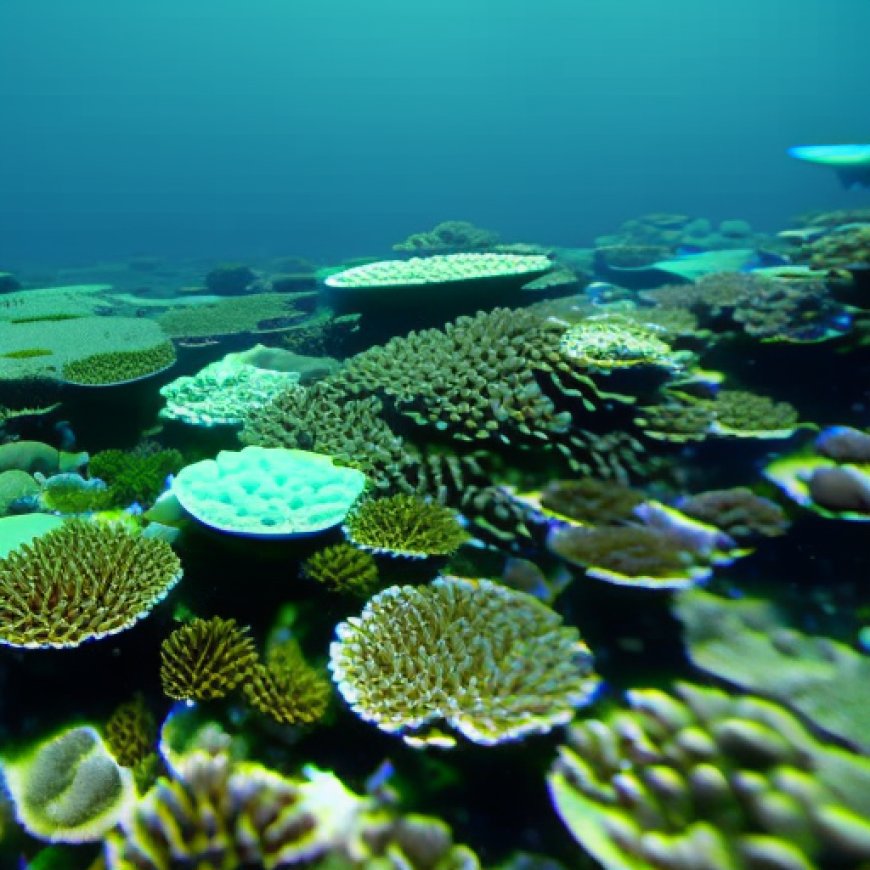Great Barrier Reef Sees Mass Bleaching as Ocean Temperatures Hit Record High
Great Barrier Reef Sees Mass Bleaching as Ocean Temperatures Hit Record High Yale Environment 360


Sustainable Development Goals and the Great Barrier Reef
The Great Barrier Reef, located in Australia, is currently experiencing its fifth mass bleaching event in the past eight years. This phenomenon occurs when warm waters cause corals to expel the colorful algae that live inside them, resulting in the reefs turning white. While reefs can recover if waters cool down, prolonged periods of heat can be lethal to the coral ecosystems. Aerial surveys conducted by the Great Barrier Reef Marine Park Authority have confirmed widespread bleaching in shallow waters.
Impact of Climate Change and El Niño
The Great Barrier Reef is not the only reef facing mass bleaching. Coral reefs around the world have been affected by this phenomenon in the past year. The oceans are overheating due to climate change, and the warming trend is further amplified by El Niño. In February, the average ocean surface temperature worldwide reached a record high of 69.91 degrees F (21.06 degrees C), according to the EU Copernicus Climate Change Service.
Experts from the National Oceanic and Atmospheric Administration (NOAA) have issued a warning that the world’s reefs are on the brink of their worst-ever mass bleaching event. Roger Beeden, chief scientist with the Great Barrier Reef Marine Park Authority, emphasizes that climate change poses the greatest threat to the Great Barrier Reef and coral reefs globally.
Potential for Recovery
Although the Great Barrier Reef is highly vulnerable to severe heat, not all areas have been affected by mass bleaching. There is hope that those areas which have been impacted can bounce back. Beeden states, “The Reef has demonstrated its capacity to recover from previous coral bleaching events, severe tropical cyclones, and crown-of-thorns starfish outbreaks.”
ALSO ON YALE E360
SDGs, Targets, and Indicators
-
SDG 13: Climate Action
- Target 13.3: Improve education, awareness-raising, and human and institutional capacity on climate change mitigation, adaptation, impact reduction, and early warning.
- Indicator 13.3.1: Number of countries that have integrated mitigation, adaptation, impact reduction, and early warning into primary, secondary, and tertiary curricula.
-
SDG 14: Life Below Water
- Target 14.2: Sustainably manage and protect marine and coastal ecosystems to avoid significant adverse impacts.
- Indicator 14.2.1: Proportion of national exclusive economic zones managed using ecosystem-based approaches.
- Indicator 14.2.2: Progress by countries in the degree of implementation of international instruments aiming to combat illegal, unreported, and unregulated fishing.
The article highlights the issue of mass bleaching in the Great Barrier Reef due to climate change and warming oceans. This is directly connected to SDG 13: Climate Action, which aims to combat climate change and its impacts. The specific target under this SDG that can be identified is Target 13.3, which focuses on improving education and awareness on climate change mitigation and adaptation. The article mentions the threat of climate change to the Great Barrier Reef, emphasizing the need for action to address this issue.
The article also discusses the importance of managing and protecting marine and coastal ecosystems to avoid significant adverse impacts. This aligns with SDG 14: Life Below Water, which aims to conserve and sustainably use the oceans, seas, and marine resources. The specific targets under this SDG that can be identified are Target 14.2, which focuses on sustainable management and protection of marine and coastal ecosystems, and Target 14.2.2, which measures progress in combating illegal fishing. The article mentions the vulnerability of the Great Barrier Reef to severe heat and highlights the need to protect coral reefs globally.
Based on the article’s content, the following indicators can be used to measure progress towards the identified targets:
- Indicator 13.3.1: Number of countries that have integrated climate change mitigation and adaptation into education curricula. This indicator can measure progress in improving education and awareness on climate change.
- Indicator 14.2.1: Proportion of national exclusive economic zones managed using ecosystem-based approaches. This indicator can measure progress in sustainably managing and protecting marine and coastal ecosystems.
- Indicator 14.2.2: Progress by countries in the degree of implementation of international instruments aiming to combat illegal fishing. This indicator can measure progress in combating illegal, unreported, and unregulated fishing.
SDGs, Targets, and Indicators
| SDGs | Targets | Indicators |
|---|---|---|
| SDG 13: Climate Action | Target 13.3: Improve education, awareness-raising, and human and institutional capacity on climate change mitigation, adaptation, impact reduction, and early warning. | Indicator 13.3.1: Number of countries that have integrated mitigation, adaptation, impact reduction, and early warning into primary, secondary, and tertiary curricula. |
| SDG 14: Life Below Water | Target 14.2: Sustainably manage and protect marine and coastal ecosystems to avoid significant adverse impacts. | Indicator 14.2.1: Proportion of national exclusive economic zones managed using ecosystem-based approaches. |
| SDG 14: Life Below Water | Target 14.2.2: Progress by countries in the degree of implementation of international instruments aiming to combat illegal, unreported, and unregulated fishing. | Indicator 14.2.2: Progress by countries in the degree of implementation of international instruments aiming to combat illegal, unreported, and unregulated fishing. |
Behold! This splendid article springs forth from the wellspring of knowledge, shaped by a wondrous proprietary AI technology that delved into a vast ocean of data, illuminating the path towards the Sustainable Development Goals. Remember that all rights are reserved by SDG Investors LLC, empowering us to champion progress together.
Source: e360.yale.edu

Join us, as fellow seekers of change, on a transformative journey at https://sdgtalks.ai/welcome, where you can become a member and actively contribute to shaping a brighter future.







